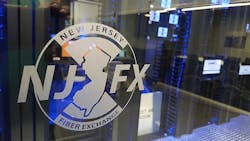The Jersey Shore is becoming a major destination for your photos, status updates and Internet searches. A new trans-Atlantic subsea cable will land in Wall Township, ferrying European Internet traffic from Google and Facebook to the New York metropolitan area.
The HAVFRUE cable, which was announced earlier this year, will land at the NJFX colocation camnpus in Wall, the company said today.
The HAVFRUE cable will connect New Jersey and Denmark, with branch connection to Ireland and Norway. The project is backed by a consortium that includes Google, Facebook subsea cable specialist Aqua Comms and Norwegian fiber provider Bulk Infrastructure.
The project will build on the momentum for NJFX, which is part of a movement to build new data center capacity at the cable landings that tie the global Internet together.
Gil Santaliz, the CEO and founder of NJFX, said the new cable “furthers our goal to make New Jersey a strategic landing point for the world’s subsea deployments and serve as a major interconnection for global communications.”
“The HAVFRUE cable system represents one of the most significant cable systems to ever cross the Atlantic,” said Santaliz, CEO for NJFX. “We are proud to be a part of this new subsea cable system.”
Cable to Cloud: New Data Flows Raise Hopes in Virginia Beach
Undersea telecommunications cables are now strategic assets in the growth of hyperscale Internet companies, with companies like Google, Facebook, Microsoft and Amazon emerging as key investors. As these cloud titans focus investment in cables and new routes, it has the potential to reshape how data flows across the ocean, onto the U.S. mainland, and into the cloud.
A group of data center companies are seeking to capitalize on this trend, investing in new data centers at the areas where the cables rise from the sea. Historically, cable landing sites have featured minimal infrastructure, perhaps a manhole near the beach where they come ashore and sometimes a small facility operated by the phone company or cable owner. From there, fiber routes carry the data to carrier hotels in major cities like New York or Los Angeles.
NJFX is the largest and most ambitious of these new cable landing projects, featuring a 64,000 square foot Tier III data center built next to a cable landing station operated by Tata Communications. The facility is about a mile from the ocean, and with 10 megawatts of power capacity, and could support as many as 1,000 customers, according to Santaliz.
The Cloud Brings Colo to Cable Landings
Santaliz believes that as content providers and cloud companies seek new ways to move data around the world, it is creating new market niches for colocation and interconnection specialists. Similar projects are underway in Virginia Beach, Boca Raton in Florida and Moncton, New Brunswick.NJFX already has four cable systems landing at its campus facility, including TGN1, TGN2, Seabras and the coming WALL-LI project from Crosslake Fiber, the only subsea cable to directly connect New Jersey to New York
HAVFRUE is designed to deliver superior speed and lower latency design, capitalizing on advances in subsea cable construction since the original cable building boom during the dot-come era. Santaliz says that as existing transatlantic systems start reaching their 20-year life cycle, the HAVFRUE design will gain an economic advantage over its older rivals.
About the Author



